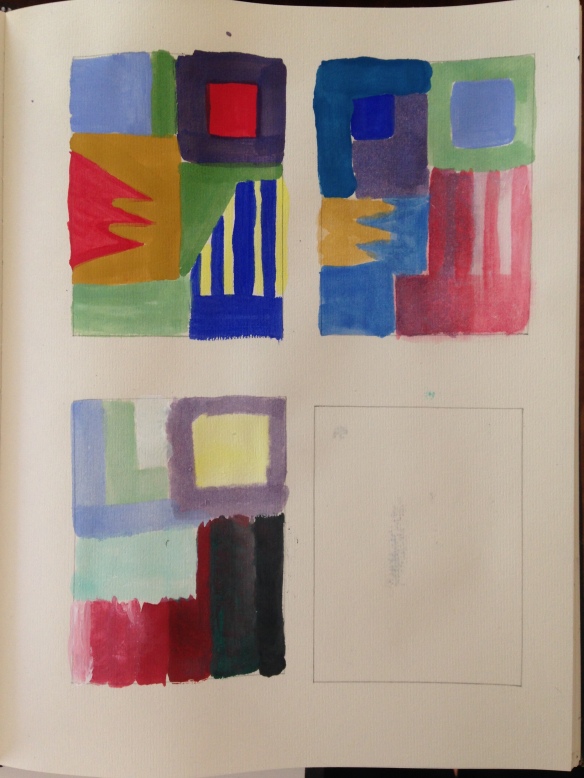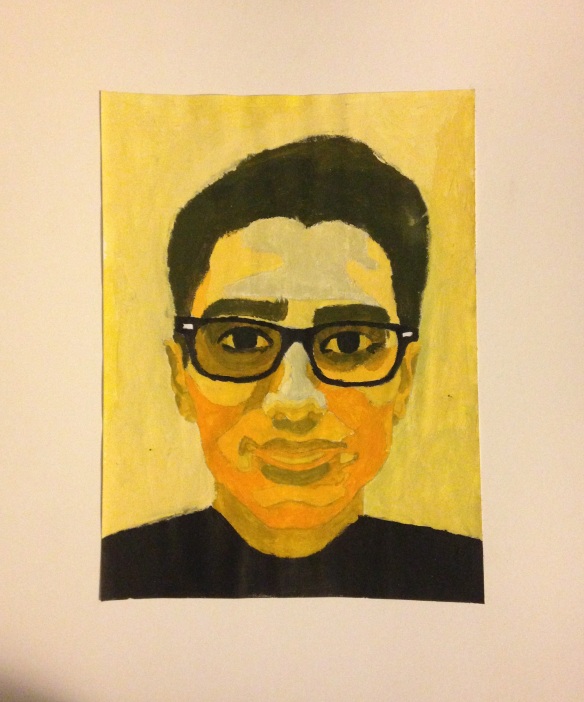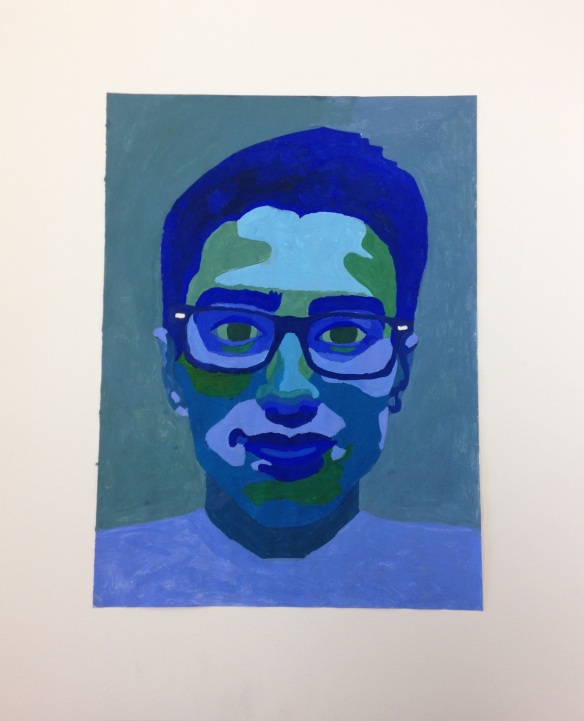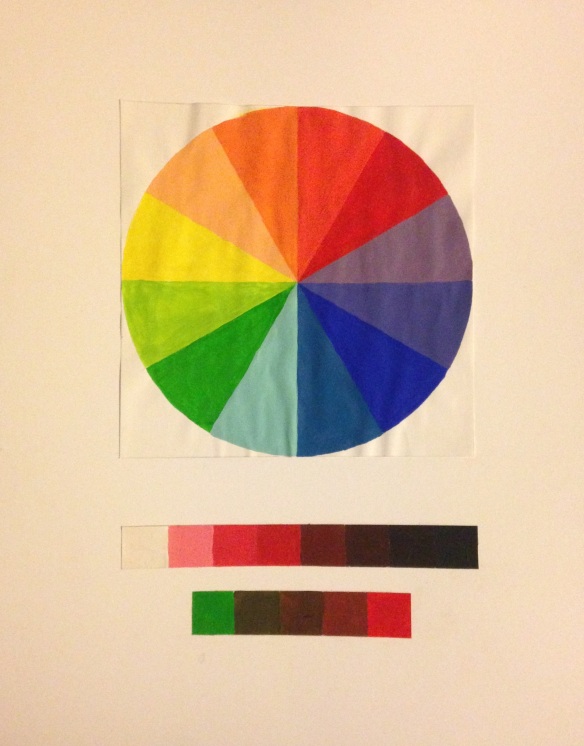



Chris O’Connor
2D Design
Prof. Claudia
My design is comprised entirely of implied lines when creating the shapes, as the colors define their borders. I have a full value range of red on the top-right of my design going from dark red to light red as it ascends, which is contrasted by a sky blue it competes with visually. It guides the eye to the left yellow square outlined with a purple border, which utilizes simultaneous contrast of colors opposite on the color wheel to produce a popping yellow. Many other colors of the color wheel are included across the picture plane such as analogous colors of green and forest green in the bottom right. There are neutral colors of a brown and grayish green by the yellow-purple square, and the grayish green shape extends towards the viewer to accomplish depth, and the orange squares within it compliment this effect as they decrease in size getting further away. They also overlap other lines and get lighter coming closer to the viewer. This area is like a shadow to the focal point yellow square.













 The figure/ground relationships are evident in this design and each of the black and white shapes compete to act as positive and negative space. The composition contains 50/50 white and black shapes. Both sides are a mirror image of each other exactly. I used a balance of a wavy shape to outline the tear shapes and made spiky wing designs at the top to flare the design out. The successful aspects of my design are the spiked and curvilinear lines that create interest, and how smooth some of those curves look. There aren’t many unsuccessful aspects about this work. The craft is clean and paper glued without any residue showing. The sizes are correct and the paper centered in the right place.
The figure/ground relationships are evident in this design and each of the black and white shapes compete to act as positive and negative space. The composition contains 50/50 white and black shapes. Both sides are a mirror image of each other exactly. I used a balance of a wavy shape to outline the tear shapes and made spiky wing designs at the top to flare the design out. The successful aspects of my design are the spiked and curvilinear lines that create interest, and how smooth some of those curves look. There aren’t many unsuccessful aspects about this work. The craft is clean and paper glued without any residue showing. The sizes are correct and the paper centered in the right place.
